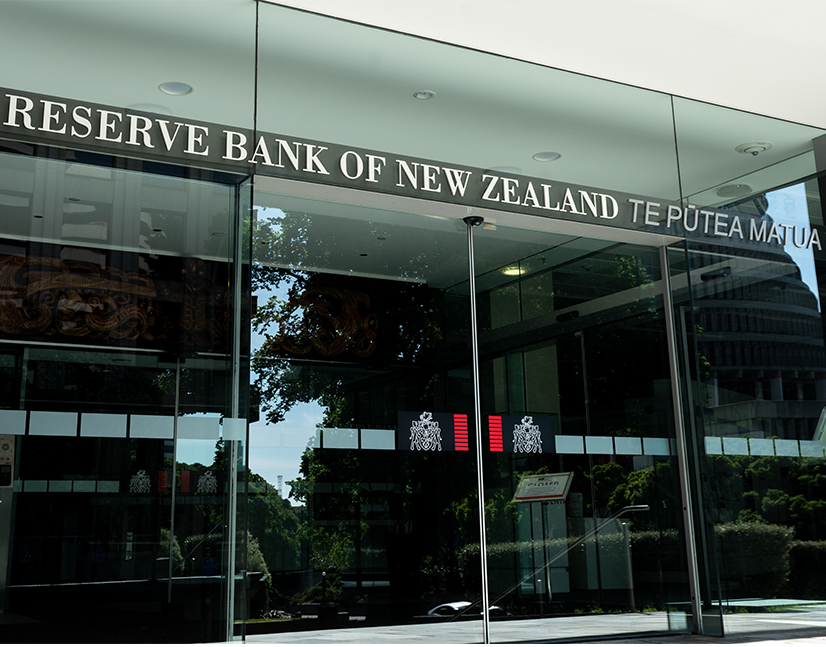
Women in New Zealand Capital Markets Roundtable
In 2020, KangaNews launched its Women in Capital Markets Yearbook with a focus on amplifying female voices in the Australian market. The publication received widespread positive response, including requests from New Zealand to bring a similar project to the other side of the Tasman Sea. On 8 March this year – International Women’s Day – KangaNews hosted its first roundtable discussion exclusively featuring female leaders in the New Zealand debt market. The event was not just to discuss gender diversity but to provide a forum for their voices at a key moment of market development.
MARKET TONE
Craig What is the general mood in the New Zealand capital market in early 2021?
FORD The sense I have is that people are in awe of how New Zealand is handling COVID-19. Even though last week we went back into lockdown for a week here in Auckland, we still had several consecutive days of zero cases. We have a good handle on the situation and a bright future ahead.
Last year, corporate New Zealand acted very quickly to bring costs under control and to ensure sufficient liquidity on balance sheets. We are facing the year ahead with a mature and strong corporate New Zealand that is looking for opportunities ahead. This means that, all being well in 2021, we will see corporates taking advantage of investment opportunities and capex, and we are seeing some strong M&A activity.
In the workplace, most of my colleagues are very happy to have increased flexibility to work from home if need be. But we have seen many choosing to return to the office because they enjoy and see value in the office environment and culture.
I think we are also seeing great resilience. New Zealand is rebounding quickly from short-term lockdowns and we are travelling and dining out, and thus spending and helping lift confidence across the economy.
REEVES There is optimism around the vaccine rollout and ongoing economic recovery, but there is also some concern around how quickly long-end rates have moved up since December 2020. Clearly, we would like to see the market settle down, although it is important to remember that we are still at historic lows.
To put this into context, when Kāinga Ora – Homes and Communities returned to the New Zealand debt market in 2018, we issued a seven-year bond at 3.4 per cent. This is currently sitting inside 2 per cent.
For our own part, we started the year well-funded having taken the opportunity to get ahead of our borrowing task last year. We are in the fortunate position to be able to wait for markets to settle a bit before planning our next syndicated transaction, though this will ideally be before June.
MARTIN There are plenty of reasons to be optimistic. NZDM [New Zealand Debt Management] has issued almost NZ$60 billion (US$42.4 billion) of New Zealand government bonds in the past 12 months. Our previous largest annual programme, in 2011, was less than NZ$20 billion. All our issuance – whether by tender or syndication – has been well received, giving us confidence that we can fund a larger programme. We have also been encouraged by the ongoing increase in diversity of our investor base.
There are challenges. There is greater uncertainty around forecasts and projections for future issuance. We always aim for transparency and endeavour to provide investors with as much certainty as possible. Doing this while still in a relatively uncertain environment really highlights the ongoing need for clear communication. The other challenge is navigating volatile market conditions, especially when planning syndications.
“There is greater uncertainty around forecasts and projections for future issuance. We always aim for transparency and endeavour to provide investors with as much certainty as possible. Doing this while in a relatively uncertain environment really highlights the ongoing need for clear communication.”
NG The New Zealand ‘brand’ is viewed as relatively robust and globally we have been held up as a country to aspire to. This is something the economy, people and companies can capitalise on. There is a good sign of confidence for companies and primary markets have continued to function well through changing alert levels.
There are clearly challenges ahead. We have seen big market moves in recent weeks, and volatility and uncertainty will continue to play a part. However, issuers are in a good place overall to move forward.
RAYNER As others have said, there is a degree of optimism about the economic recovery in New Zealand. There was a rapid health, fiscal and monetary policy response, and the coordinated effort across New Zealand has supported activity and jobs. Unemployment has risen much less than we had feared.
However, we also need to be mindful of uncertainty around the pace of recovery and the risks that remain. The lift in activity has been uneven across sectors and jobs, and the economy remains vulnerable until COVID-19 vaccination programmes are rolled out and when borders reopen. There is also an outstanding question about the long-term effect on export businesses such as tourism.
Our view, therefore, is that monetary stimulus will continue to be required for some time to ensure the recovery is sustained. Markets are pricing in a global economic recovery and a rise in inflation expectations, but we should not get too far ahead of ourselves.
We also need to think about medium-term vulnerabilities. There is a high degree of uncertainty about how the pandemic will affect the global movement of trade and people, and what this could mean for the structure of a small, open economy such as New Zealand.
There will also be challenges associated with the unprecedented policy response that has been required. We have seen a big shift to private from public balance sheets, increased debt from already elevated levels globally, rising asset prices and an increase in risk taking. It is important to be mindful that the global economy could be vulnerable to future shocks.
DODDRELL New Zealand’s early and hard action against COVID-19 has led to a resilient domestic economy, which has been positive for debt capital markets in 2021. We have seen transactions from NZDM, Westpac Banking Corporation New Zealand Branch and several corporate deals, which have all achieved strong execution outcomes.
I also agree that the last two weeks have highlighted the challenges we face, including the rapid moves in the underlying rates environment making primary execution more challenging. The key is to navigate these periods of volatility. There are clear signs that investors have capital to put to work and that good outcomes can be achieved.
MINHINNICK The equity market had a strong end to 2020 despite the pandemic conditions. The index was up by about 14 per cent at the end of the year. However, it has been a rocky start to 2021. The market has come off by about 7 per cent, having dipped as low as about 10 per cent. There was a small correction and considerable volatility. We are also seeing very interesting dynamics evolving in offshore markets, with short squeezes on certain stocks.
Despite these unusual conditions, there is also optimism based on a successful vaccine rollout. Many companies are this year considering raising capital, undertaking M&A activity or projects that they have had in the pipeline for some time.
Craig How has the working environment changed for Young Women in Finance (YWF) members?
LE QUESNE As young people progress through the early part of their careers many consider a move overseas. The pandemic is clearly making this hard, or even impossible, to do. Somewhat more optimistically, there is movement in the job market and attendance at our YWF events from the start of 2021 has been pleasing. We get the sense there is good engagement between colleagues, peers and the wider industry around issues of diversity and inclusion.
We continue to engage with our members on the impact of the changing environment, specifically how they can still accommodate previously held plans as well as continuing to progress their careers in alternative ways.
INFINZ Young Women in Finance Profile
The Young Women in Finance (YWF) group comes under the umbrella of the Institute of Finance Professionals New Zealand (INFINZ), a member-based industry body for professionals working and participating in finance roles and the financial-services ecosystem.
Diversity and inclusion in the New Zealand capital market
Women remain underrepresented in New Zealand’s business- and market-leadership environments. Market participants identify ways to help close the gap and suggest a key focus should be on promoting these careers at an early stage including via learning institutions.
LE QUESNE The YWF network is part of the Institute of Finance Professionals New Zealand. It was established in 2015 to take a leadership role in supporting increased diversity in the New Zealand capital market as well as the finance industry more broadly.
We see having a strong professional network as critical to help industry participants build networks, foster connections and obtain support throughout their careers. We do this by bringing together a cohort of younger women with individuals who are more advanced in their careers, to encourage networking and connections.
Craig New Zealand is the only sovereign to be upgraded by S&P Global Ratings since the COVID-19 crisis began. Does this play into a positive international view of the country?
MARTIN New Zealand’s sovereign rating partly reflects the credibility successive New Zealand governments have built in maintaining prudent fiscal policy through the cycle. Alongside the upgrade, S&P acknowledged that New Zealand entered the crisis with a low enough level of net debt to provide a cushion and be able to respond as needed.
New Zealand also has strong institutional and governance structures – the Public Finance Act, the independence of the Reserve Bank of New Zealand (RBNZ) and government transparency, for example.
Living in New Zealand, we take these things for granted on the expectation that this is the way nations are run. However, S&P points to these factors as a strength specific to New Zealand. They enhance the ability for proactive and transparent decision-making during volatile periods, and set us up well to exit on the other side.
RAYNER I agree that New Zealand has sufficient ‘policy space’ and strong institutional frameworks to respond to this event, which enabled us to move rapidly to deliver a fiscal and monetary policy response of unprecedented size.
With monetary policy, we had not implemented QE before but we were able to do so quickly and in large scale. The RBNZ had many tools available and was able to deploy them quickly to support markets and the economy.
We will attract a broad range of capital from this – whether it is financial, human or social. We need to decide how best to use it for the long term, thinking about how to lift our potential growth, productivity and living standards, and trying to tackle medium-term issues such as climate change.
MINHINNICK We have seen foreign ownership of New Zealand listed stocks and bonds reach an all-time high of around 39.6 per cent. This is partly because of the factors just mentioned – an economy that is viewed as very open and transparent, has good governance and has also been extremely well-managed through the pandemic. As the world opens again, it will be interesting to see whether debt levels remain high and capital stays onshore.
FORD The key to retaining offshore-investor interest in New Zealand is to ensure we continue to develop a pipeline of attractive issuance – whether this be through new names, environmental, social and governance (ESG) considerations or desirable tenor – all issued in parcel sizes that support liquidity. Issuing product that qualifies for various global indices or platforms such as the Nasdaq sustainable-bond network will help showcase New Zealand issuers.
REEVES We need to make sure we continue to tell this strong economic and political story. It is the core of all our other stories and we shouldn’t be too shy about it.
We have just completed a European roadshow virtually and this was one of the key elements that came through. Investors highlighted the fact that New Zealand is regarded as something of a safe haven. The recent sovereign upgrade also triggered an upgrade for Kāinga Ora, which obviously we were really pleased about.
NG The spotlight has been on New Zealand. Everyone wants to be us and the brand is very strong. We also need to extract value from the story. Transactions like Auckland Council’s groundbreaking 30-year green bond priced in 2020 also help highlight this story to offshore investors.
There is also a human-capital aspect: an increase in Kiwis returning home and others looking to migrate to New Zealand as a result of New Zealand’s COVID-19 response.
DODDRELL New Zealand’s response to COVID-19 has brought positive attention and this has not only been witnessed in the high-grade space. We took Vector and First Gas to the US private placement market last year and the ‘New Zealand Inc’ aspect of their credit stories was well received. Investors highlighted New Zealand’s management of the crisis, at government and personal level, and some investors even said ‘how can we emigrate?’
RATES ENVIRONMENT
Craig How are the RBNZ and market participants thinking about the future of QE and its eventual tapering?
LE QUESNE The objectives of our large-scale asset purchase (LSAP) programme remain the same. These are to lower interest rates to support economic activity and employment, and to support market functioning. We have seen higher yield at the start of this year as markets respond to an improving economic outlook and, potentially, higher inflation. But we think the environment is still highly uncertain notwithstanding the positive signal.
We have seen central banks globally commit to prolonged, considerable monetary stimulus to help inflationary pressures grow. Governments have committed to significant fiscal stimulus, too. Therefore, and given the Monetary Policy Committee (MPC)’s policy stance, we are not at the point of considering what a QE exit strategy looks like. The LSAP programme remains a core part of our monetary-policy stimulus package.
From week to week, our Financial Markets Department has delegation and responsibility to adjust weekly purchases as necessary to achieve the MPC objectives. We monitor financial-market conditions incredibly carefully on a daily basis and have the operational flexibility to respond as needed.
We are aware that, as the LSAP programme has matured over time, we are starting to hold more and more individual bond lines – in combination with a reduction in NZDM issuance. We are mindful of this when thinking about the impact of the programme on market functionality.
MARTIN In recent weeks we have observed volatility in the market and a significant rise in yield. This is partly driven by global factors but is also reflective of improving economic outcomes in New Zealand, including upside surprises in economic data. It is worth noting, though, that the market is functioning relatively well and is reflective of underlying fundamentals – we do not have any particular concern about market function at this point.
I’d contrast this with a similar period about a year ago, when there were quite stark market moves that were more reflective of fear. We received feedback that the market was dislocated at that time so its behaviour was less directly related to the fundamentals.
Craig What has been the impact of the government’s direction to the RBNZ to factor house prices into monetary-policy decisions?
RAYNER The housing market had always been a key consideration in our policy decisions, even prior to the new direction. Housing constitutes a substantial part of the economy including construction comprising around 10 per cent of employment and housing-related costs accounting for around 25 percent of CPI.
Given it is the predominant form of investing for New Zealanders, house-price and leverage cycles are also a key financial-stability risk. We have always kept these aspects front of mind when it comes to both our monetary-policy and financial-stability decisions. Even so, the new direction takes this focus a step further, particularly for our financial-stability decisions.
As part of our financial-stability mandate, the new direction requires us to have regard to sustainable house prices. This requires us to think about what sustainable house prices are, how to measure them and what framework we need to make policy decisions. Once we understand this, we can start to think about the tools and levers at our disposal to respond if needed.
Loan-to-value ratios (LVRs), bank stress testing and capital requirements, and certain other prudential tools, are available to us. But the new direction will require us to think about a new analytical framework for sustainable house prices and how we can support housing affordability for all New Zealanders.
It is important to note that it does not directly change the core objectives of our MPC mandate. We remain committed to maintaining low and stable inflation and contributing to maximum sustainable employment. However, the committee must also assess the effect of its decisions on the government’s policy related to sustainable house prices and communicate this in a transparent way.
Rising asset prices are a key transmission channel for monetary policy. When we reduce interest rates, we expect people will borrow and invest; housing is a key form of investment in New Zealand. The wealth effect associated with rising asset prices can also be an important driver of consumption growth.
We start to get concerned when house prices rise at a rate out of line with fundamentals, such as income and rental return, as well as when we start to see leverage increase rapidly. This makes households vulnerable to shocks, as are banks if they are not lending prudently.
In this regard, there is some concern based on recent housing-market developments as well as high-leverage lending, particularly in the investor sector. We know investors are more prone to fire sales and exiting quickly when the market turns, amplifying house-price cycles and leading to negative externalities for all New Zealanders.
We reintroduced LVR restrictions from 1 March – after removing them last year to support the economic recovery – and also tightened restrictions for investors from 1 May. From here, we will be developing our frameworks for sustainable house prices and watching housing-market developments closely. We can further adjust prudential settings if needed to protect financial stability.
Craig Undersupply is clearly an issue in the housing market, and one that Kāinga Ora is tasked with helping to solve. What progress is it making?
REEVES We are trying to build as many houses as possible as quickly as we can, but we still have some way to go before we meet the demand of people requiring state housing. Kāinga Ora provides 7 per cent of New Zealand’s residential construction and we are the biggest single house builder. It is a good time for us to show leadership in the way we build houses, innovate around products and make efforts to support people to get onto the property ladder.
The government announced at the time of its 2020 budget that it plans to deliver 8,000 new homes, made up of 6,000 state houses to be delivered in the next four years and 2,000 transitional houses to be delivered in two years. Kāinga Ora is responsible for 70 per cent of this so we have a considerable task in front of us. To put this in context, our waitlist is currently at 23,000 – a figure that has quadrupled in the last four years.
Housing is always of interest to our investors, particularly given the pace at which house prices continue to rise. This means we receive questions around how Kāinga Ora is tackling the issue of housing demand and supply.
n MARTIN Housing frequently comes up in our investor meetings, too. It seems even to be on the radar of investors that are not intimately familiar with New Zealand. As well as being an issue of pure curiosity, it arises in the context of investors trying to work out what it might ultimately mean for the RBNZ’s decision-making process.
Diversity and COVID-19: a silver lining to the pandemic?
COVID-19 caused a radical re-examination of working practices including a forced move to home working for many. New Zealand market participants hope some of the benefits will linger even as the crisis recedes.
DODDRELL COVID-19 has humanised us all. It was interesting to be on deal calls and hear children’s noise in the background from my male colleagues and clients.
What is very important for empowering woman is the strong proliferation of support from male colleagues within my organisation. They help to provide strong momentum to change.
CREDIT MARKET
Craig How has the local market adapted to the reduction in senior bond supply from banks?
NG Bank supply has traditionally made up 20-40 per cent of total issuance. In 2020, it fell to around 5 per cent and year to date in 2021 it has been around 14 per cent. It is challenging to make up this gap in issuance from other sectors, although last year was a record year for Kauri supply at just more than NZ$6.5 billion.
Whether banks come back into the market in 2021 remains to be seen. Things can change quite quickly but at the moment the banks appear to have sufficient funding. This being said, Westpac has issued domestically and BNZ offshore.
DODDRELL Westpac was the first bank to issue domestically in 2021, printing NZ$650 million of five-year bonds in February as part of a strategic approach to ensure access to multiple funding sources. BNZ’s US dollar deal from Q1 was no doubt driven by similar thinking. It is possible that bank issuance will remain at a low level given the funding options available. The banks will continue to assess all markets accordingly.
FORD Due to reduced supply from banks, activity in the secondary market has picked up. We have seen investors chasing existing stock and secondary spreads closing in to levels not seen since before the financial crisis.
From a demand perspective, every asset class in New Zealand is the same at present. Investors have cash looking for a home and the desire to diversify. This is why we are seeing what we are in the housing and equity markets.
MINHINNICK In general, investors are being very active around assessing the asset classes into which they are putting their money. We are seeing major pivots around market inflection points, where investors will suddenly flow into certain asset classes – whether they be equity or fixed interest. Investors are not prepared to be passive in this environment, where we potentially have a lot of movement in rates and also inflation creeping into the picture.
Craig What is the outlook for business-sector investment as New Zealand emerges from the pandemic?
FORD With the uncertainty that COVID-19 first presented, corporates acted quickly to reduce costs and address lines of business that were not providing appropriate return, ensuring they were in a sustainable financial position.
This means balance sheets now have some capacity across the board. Generally, corporates have refined their business continuity plans, built more resilient operating models and gained confidence operating under different scenarios.
Some question marks remain. One is around employment and whether companies can hire the right people, including skilled workers as well as those on temporary visas, to achieve full capacity. Another is around supply chains and whether there might be an impact on confidence to invest going forward. Companies may look to bring manufacturing back to New Zealand to mitigate some of these concerns.
On the first point, there is some hope that there will be movement on productivity in New Zealand if the labour market is constricted. New Zealand has recognised the need to lift productivity for years but when it is easy just to throw more people at a problem the big advancements that we need do not happen. Perhaps we will observe increased investment in technology, which will help support improvements in productivity.
MINHINNICK When we entered lockdown, in March last year, we saw companies come to market extremely quickly with capital raisings to strengthen their balance sheets. When we subsequently ran data analytics, there was about a fivefold increase in capital-raising velocity compared with the aftermath of the financial crisis.
It was extremely good to see companies completing capital raises of all sizes. We saw volumes from NZ$1.1 million for Enprise right through to a NZ$1.2 billion jumbo raise for Auckland Airport. Each was well supported and issued very rapidly. Our regulatory team modified the rules to allow companies to raise more money, allowing them to keep operating through extremely difficult conditions.
Last week, when we were back in lockdown, Contact Energy completed a NZ$400 million capital raise and My Food Bag launched and started trading a NZ$400 million-plus IPO virtually. The entire market is doing very well at continuing day-to-day activities in what can be extremely difficult circumstances.
NG Corporate issuers are in good shape but they also tend to be taking a prudent approach by refinancing ahead of schedule. Chorus refinanced its May 2021 maturity back in November, while Wellington Airport reopened the corporate bond market in August last year with a 2021 maturity refinancing.
DODDRELL The numbers speak for themselves. We saw NZ$20 billion in bond issuance between April and July 2020. This was largely from the high-grade sector but was still good to see. The outlook for business-sector investment is also relatively positive with a significant level of announced or potential infrastructure investment and M&A activity on the horizon.
MINHINNICK Add NZ$17.6 billion from the equity market – it was it was a big capital year. Companies are raising capital to position themselves opportunistically in case they see value in the future. This is good to see, too, because it demonstrates robust confidence.
The long-term impact of the pandemic
As New Zealand leads the world back toward normality, market participants are closely watching which aspects of pandemic living linger in the new world.
FORD The past year has been absolutely fascinating to watch from this perspective. When we first went into lockdown, I remember saying to my daughter that it would be a long time until we would eat in a restaurant again, sitting side-by side with other people. Yet the minute we changed COVID-19 levels we were all sitting in restaurants supporting our local businesses. The speed with which we reverted to previous norms was quite astounding.
One lesson this period has taught us is how much we appreciate the level of energy we absorb from being around other people. The atmosphere as people returned to the office here after Christmas was electric. You could feel the groundswell of people enjoying what they are doing. It is fantastic that we can work flexibly for a period if we need to. But we also know now that we cannot take the benefits gained from the office environment for granted.

Virtual platforms have been useful, but it is hard to beat face-to-face interaction. As soon as we are able, we will start to re-establish face-to-face connections. At the same time, we have really embraced the approach of remote working, we think this is a permanent change and we have now moved into a permanent flexible working arrangement.
SUSTAINABLE FINANCE
Craig Is New Zealand at a tipping point for sustainable finance and, if so, what will this mean for capital markets?
DODDRELL The number of conversations on sustainable finance has grown exponentially, probably helped by the COVID-19 situation. There is strong momentum including growing interest in different sustainability-linked financing structures and more sectors looking to engage.
There is a shift in focus to stakeholders from shareholders. This is positive, as is the conversation taking place in the board room about the role business needs to take with regard to its responsibility to communities, the environment and society as a whole.
It is also abundantly clear that we must have access to diverse sources of capital to finance the climate and social changes we need. One example is electrification. In order to achieve New Zealand’s carbon goals, we will need significant investment in renewables. Transpower New Zealand has stated that it expects to see electricity consumption double by 2050, primarily driven by the uptake of electric vehicles and the transition from fossil fuels.
Generation businesses will need deep funding markets globally and locally to help finance their investments if electricity generation is to increase to the level required for New Zealand significantly to decarbonise its economy.
NG We will only know whether it is a tipping point after the fact. What is clear is the significant momentum behind the sustainability trend in New Zealand, driven by the regulatory pulse – through the introduction of the Zero Carbon Act, the announcement of mandatory climate-risk reporting and the recent Climate Change Commission report – and an ever-growing consumer conscience focused on the providence of what people consume. This includes the consumption of financial products such as superannuation and KiwiSaver funds.
Craig New Zealand’s sustainable debt market has developed in recent years largely on the back of institutions that have been able to bring their whole borrowing programme under a sustainability framework. What value does this add for the borrower, the wider market and in addressing New Zealand’s sustainability and social challenges?
NG ANZ was an early adopter of sustainable finance in New Zealand, but the early conversations were hard. It was challenging to get customers to understand the relevance to the business. The conversation has since changed. There is interest everywhere including at board level, and all stakeholders are wanting more say.
The focus is now moving beyond environmental – green bonds are really defined in the business-as-usual category – to social and governance aspects through sustainability-linked or social-bond products. Even where a roadshow is not for a sustainable-finance instrument, we are finding that investors are increasingly interested in the issuer’s sustainability credentials.
The market is becoming more developed with green, social and sustainability bonds becoming mainstream. The next evolution is toward sustainability-linked loans (SLLs) and bonds that are applicable to a wider universe of companies. It is clear that, regardless of what sustainable-finance instrument is created, there needs to be alignment with the issuer’s corporate sustainability strategy and its purpose.
FORD The sustainable-finance market started with green bonds: use-of-proceeds instruments supporting investment in green assets. Globally, COVID-19 triggered a surge in issuance of social bonds as governments and supranational, sovereign and agency borrowers supported people through the devastating impacts of the pandemic. More recently, we have seen the rise of sustainability-linked instruments that can support sustainability across a broader range of businesses, some of which might not have green or social assets.
Looking forward, we see a strong pipeline of green issuance – as we make the investment necessary to transition to a low-carbon economy – and social issuance, as we respond to issues such as the housing crisis. The broadest application will be with SLLs and sustainability-linked bonds (SLBs), which will open up sustainable finance to a wide range of industries.
We recently arranged New Zealand’s first on-farm SLL. This is a great example of the flexibility of sustainable finance to have impact right at the grass roots. It also demonstrates how these products are not just for large corporates like renewable-energy generation companies. They can have application and impact right across the economy to support a more sustainable future for New Zealand.
NG It is pleasing to see such strong momentum in the market. My view is that it will continue to strengthen as investors focus on the wider aspects of ESG within companies, and also the importance of alignment between the company and sustainable strategy.
DODDRELL Making an issuer’s entire borrowing programme sustainable has been an exciting and positive development in our market and it is a good option for companies with asset bases that meet market standards. When we worked with Meridian in greening its debt programme, one notable pleasing factor was the engagement with US private-placement investors. Meridian was also included in the CleanTech Index, which itself drove demand for its stocks.
However, this is not the only route companies can take in demonstrating alignment between their financing and their sustainability strategy, or for accessing sustainable debt. If a company does not have a base of sustainable assets but has a strong sustainability strategy, it can access the sustainable-debt market by aligning to the SLL or SLB principles and climate-transition-finance guidance.
REEVES This gets to the core purpose of any entity: what do we represent, and is what we are doing sustainable? A borrower considering a sustainability framework needs to test what is it trying to achieve and how this might align with an environmental, social or wellbeing outcome.
For our part, the underlying credentials of Kāinga Ora already existed: building sustainable communities. Establishing New Zealand’s first sustainability-financing framework was a natural alignment between our function and financing its delivery.
The value we have seen is that finance becomes closer to and more integrated with the activities of delivery, particularly under use-of-proceeds reporting requirements. It has allowed finance to encourage and influence change within our business activities. We saw this with Kāinga Ora committing to all new builds requiring a minimum six homestar rating as part of the framework.
We believe sustainability frameworks provide the platform to create momentum in business activities, to assist or facilitate change more quickly than might otherwise occur. This is becoming more evident in the emergence of KPI-related sustainability-linked products that are time-bound commitments. The benefits and value for us come down to greater alignment in helping government agendas around wellbeing outcomes and climate change.
RAYNER From our perspective as kaitiaki, or guardians, of the financial system, we are tasked with maintaining and enhancing financial stability and we are supportive of urgent and meaningful action in the sustainable-finance space.
The RBNZ has its own climate-change strategy, which has been in place since 2018. There are three key elements. One is our role, from a financial-stability perspective, to ensure we understand the risks to the economy and financial system from climate change and that financial institutions are responding appropriately. We are upskilling our supervisors of financial institutions (FIs) to ensure they understand the nature of the risks and to enable them to engage with FIs around how the risks are identified, priced, allocated and managed.
Second, we are focused on managing our own carbon footprint by looking at our activities as a central bank, and particularly our investment portfolio. We are looking at ways to bring sustainable finance into central banking. This is interesting and challenging at the same time, because we have core policy objectives to keep our investments liquid and safe.
The RBNZ also has a leadership role to play through experience and connecting with all stakeholders in New Zealand and globally. We are a member of the Network of Central Banks and Supervisors for Greening the Financial System and the RBNZ’s assistant governor, Simone Robbers, is on the leadership group of New Zealand’s Sustainable Finance Forum.
There is considerable momentum on this topic within our organisation and it is great to hear about the innovation coming from elsewhere in the market to ensure sustainable finance is embedded into our future.

HIGH-GRADE ISSUERS YEARBOOK 2023
The ultimate guide to Australian and New Zealand government-sector borrowers.

WOMEN IN CAPITAL MARKETS Yearbook 2023
KangaNews's annual yearbook amplifying female voices in the Australian capital market.














